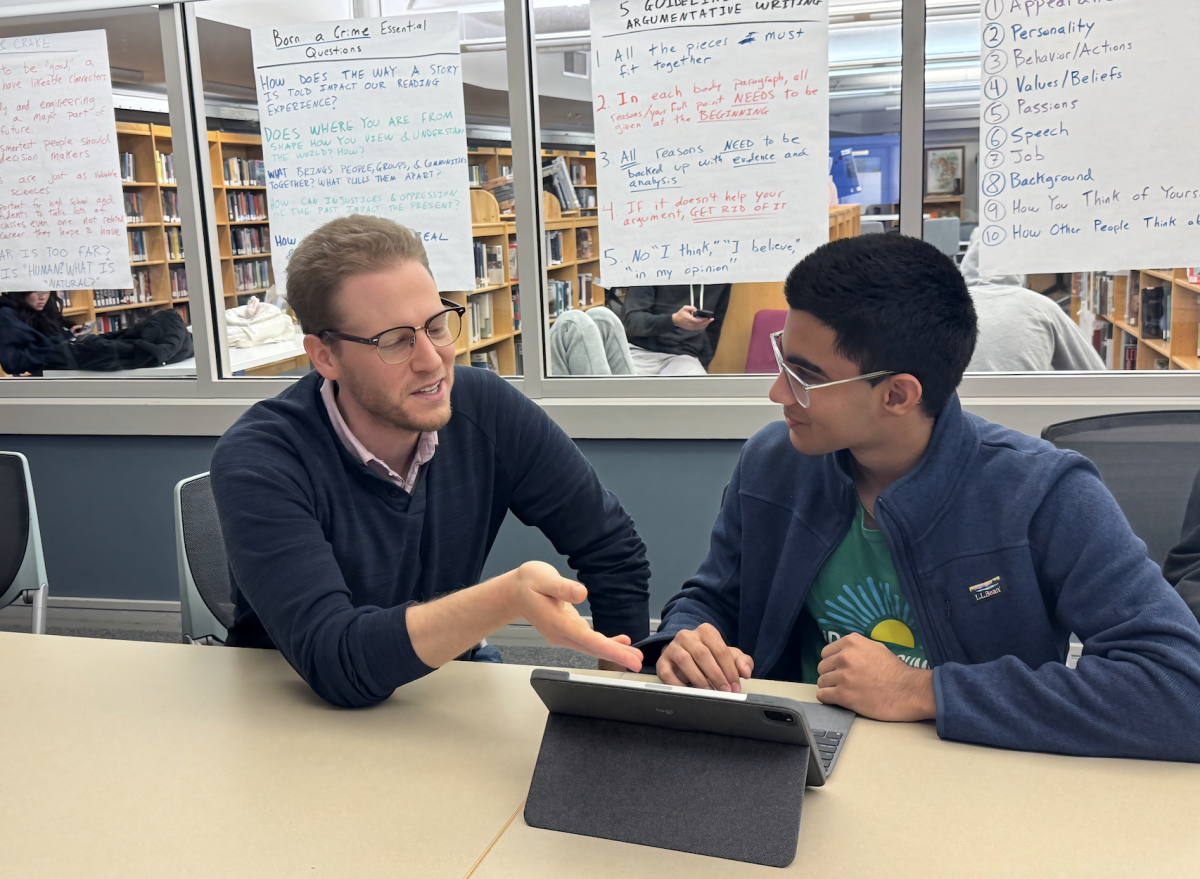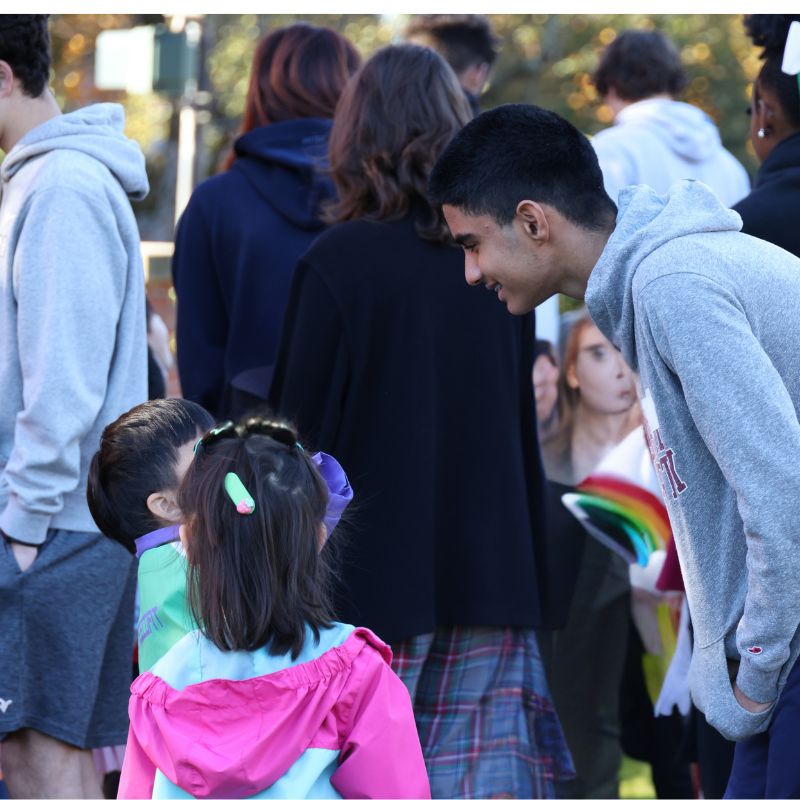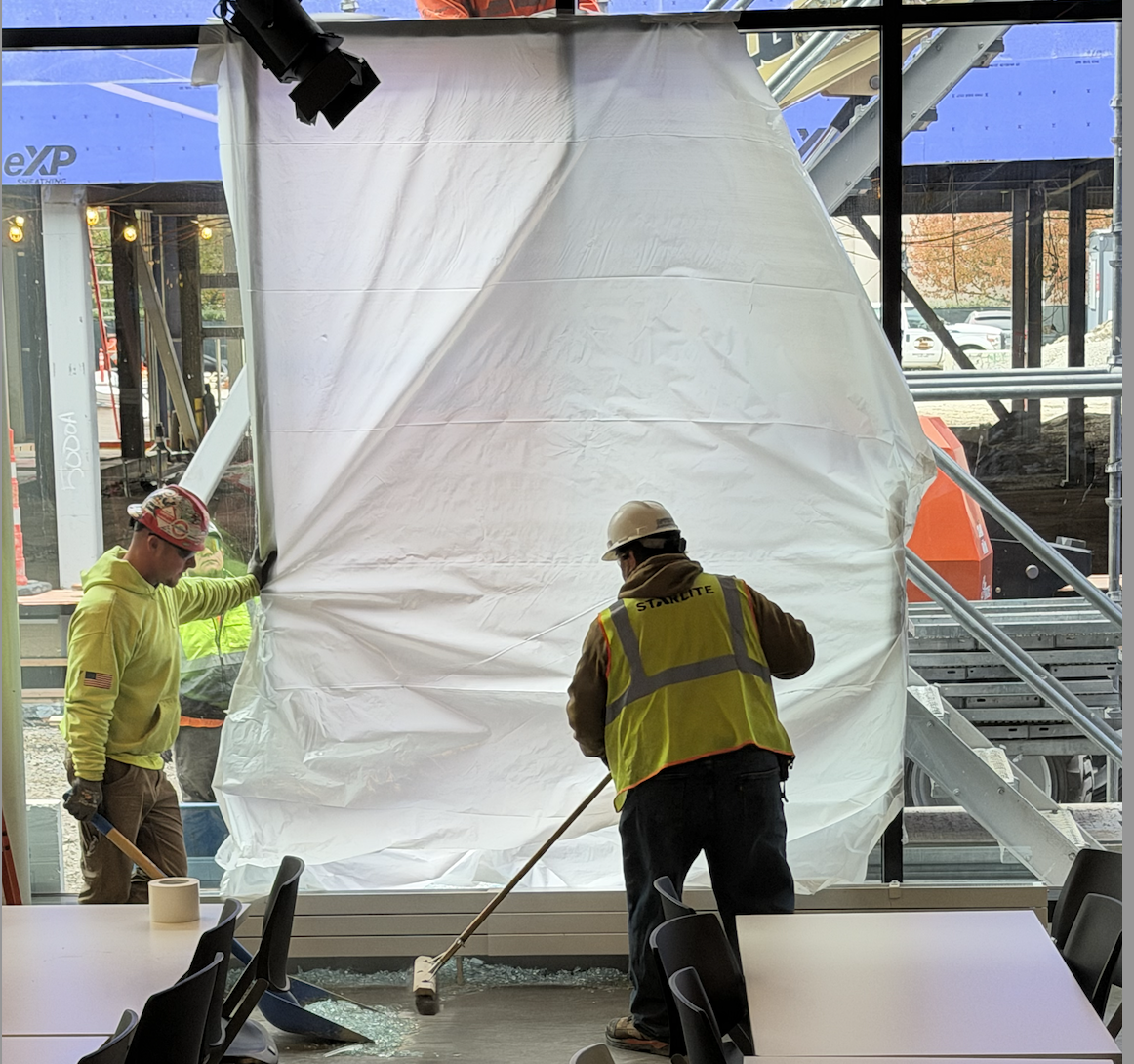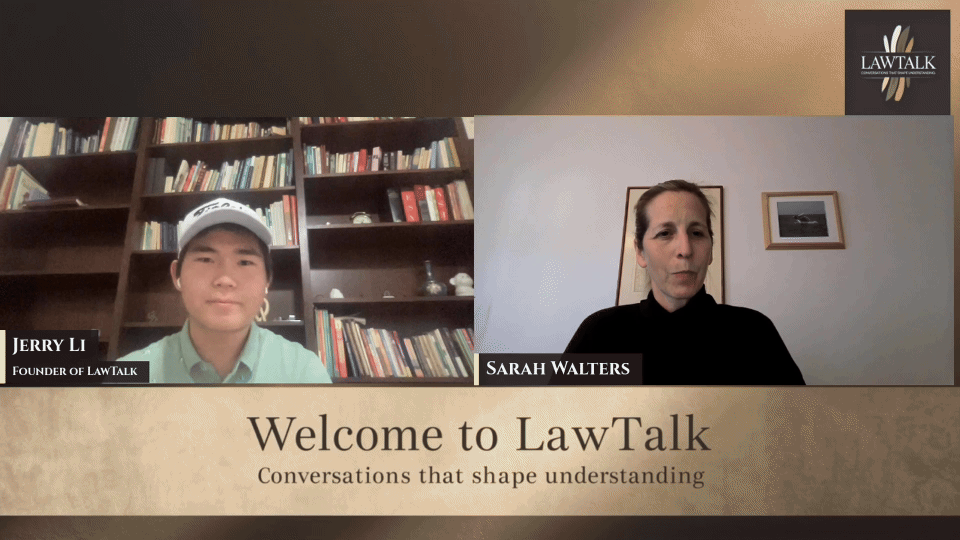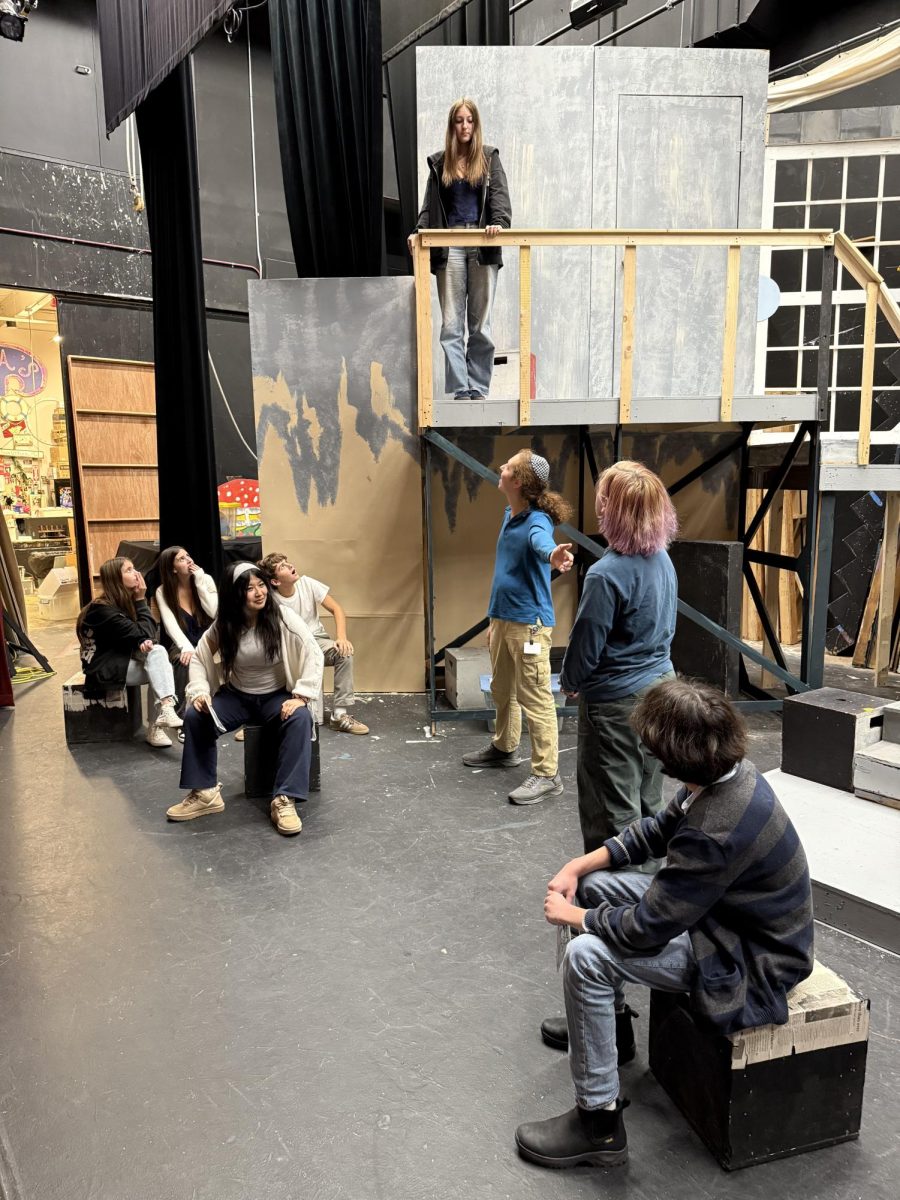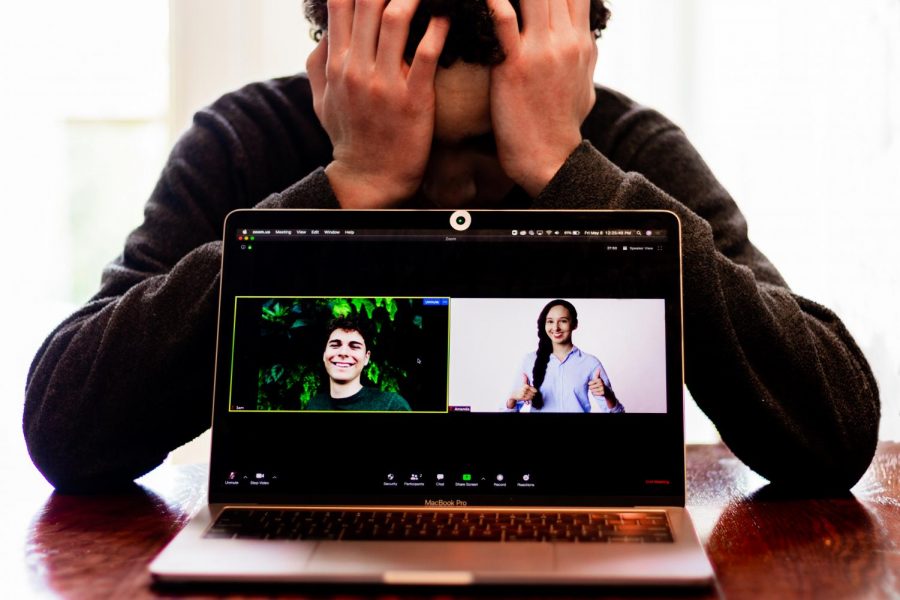Teachers and Students Address Zoom Fatigue
Photo illustration by Edan Zinn ’23.
May 8, 2020
As remote learning here continues into its sixth week, students and teachers are experiencing “Zoom fatigue.”
The slang term gained popularity after an April 24 National Geographic article written by Julia Sklar, who writes the “the unprecedented explosion of their use in response to the pandemic has launched an unofficial social experiment, showing at a population scale what’s always been true: virtual interactions can be extremely hard on the brain.” A variety of factors lead to this outcome, especially focusing on multiple tiny virtual faces at once.
“Video chats mean we need to work harder to process non-verbal cues like facial expressions, the tone and pitch of the voice, and body language; paying more attention to these consumes a lot of energy,” Gianpiero Petriglieri, an INSEAD professor who specializes in sustainable learning, recently told Forbes. “Our minds are together when our bodies feel we’re not. That dissonance, which causes people to have conflicting feelings, is exhausting. You cannot relax into the conversation naturally.”
History teacher David Cutler recently assigned a short paper, and he usually feels energized meeting one-on-one to discuss an individual’s work.
“I feel differently now with having to rely so much on Zoom,” Cutler said. “I want to help my students as best as I can, but the hours on Zoom are draining, and I struggle to give the best feedback I can. It’s definitely taxing, but I don’t see any better alternative and I’m grateful for any chance to speak with students during these difficult times, even through video chat.”
With Massachusetts Governor Charlie Baker’s recent announcement that schools will remain closed for the rest of the academic year, teleconferencing will also continue for the foreseeable future at many schools.
“It’s the right thing [to] do considering the facts on the ground at this point,” Baker said. “At this point in time there is no authoritative guidance with respect to how to operate schools safely and how to get kids to and from school safely,” Baker said.
Last week, the American Federation of Teachers publicly released a document titled, “A plan to safely reopen America’s schools and community.”
“Even though online education is not a substitute for the in-person learning and socialization that happens in schools, schools must prepare for hybrid measures: both in-school and remote education,” the document states.
For its part, the School has formed a committee to explore how to safely reopen in the fall, but as a private institution, it is not beholden to unions. However, the School has made clear that it will continue to closely follow local, state, and federal mandates and guidelines.
Assistant Director of Technology Jennifer Kunkel, who played a large role in facilitating the switch to remote instruction, believes that Zoom is an effective tool for learning—though it can’t compare to being on campus.
“Zoom is a tool for learning that helps foster a degree of connection,” Kunkel said. “It has also highlighted how important our face-to-face physical connections are. I think it’s helpful while we all are at home to see each other while in a safe space, but I do still prefer being in an actual classroom with my students.”
Grace Kandiah ‘23 expressed similar views.
“I am glad we have Zoom because it works well for class and gives some sense of routine and normalcy,” Kandiah said. “Honestly, though, I miss the social interaction of being at school and getting to talk and hang out with my friends, which is harder to replicate online or on Zoom.”
In addition to attending classes, to keep occupied, Kandiah is also using Zoom to keep in touch.
“Zoom works pretty well in general,” Kandiah said. “Personally, I’ve also been able to use it to take daily workout classes, for which it has worked surprisingly well.”
The switch to Zoom happened quickly, and Dean of Students Paul Murray, who created new remote learning schedules, had three days before spring break to get the job done.
“It was hard because we needed to keep a balance of class meetings and free time,” Murray said.” I had to pull apart our class schedule and rebuild it, but once I knew what I wanted to do, I was able to build the schedule and send them to all the faculty and students.”
Without prior exposure to Zoom, Ugonnaya Adiele ’23 feels that the transition has gone smoothly.
“The app has been easy to use, and I appreciate how quickly my teachers have adapted to the change,” Adiele said.
Spanish teacher Claudia Romero has experienced Zoom fatigue.
“After the first week of Zoom classes, my eyes every single day were exhausted,” Romero said. “I am using eye drops before bed in order to relax them at night as well as meditative exercises to get ready for the next day.”
Marco DeMelo ‘23 feels similarly.
“It’s exhausting having to pay attention or go to class, and sometimes I’ll have to force myself to pay attention, which is a struggle,” DeMelo said. “I have had trouble adapting to this new system.”
To curb Zoom fatigue, National Geographic suggests turning off your camera and just listening.
Editors’ note: This story was updated June 7, 2020, to reflect additional student views on Zoom fatigue.

